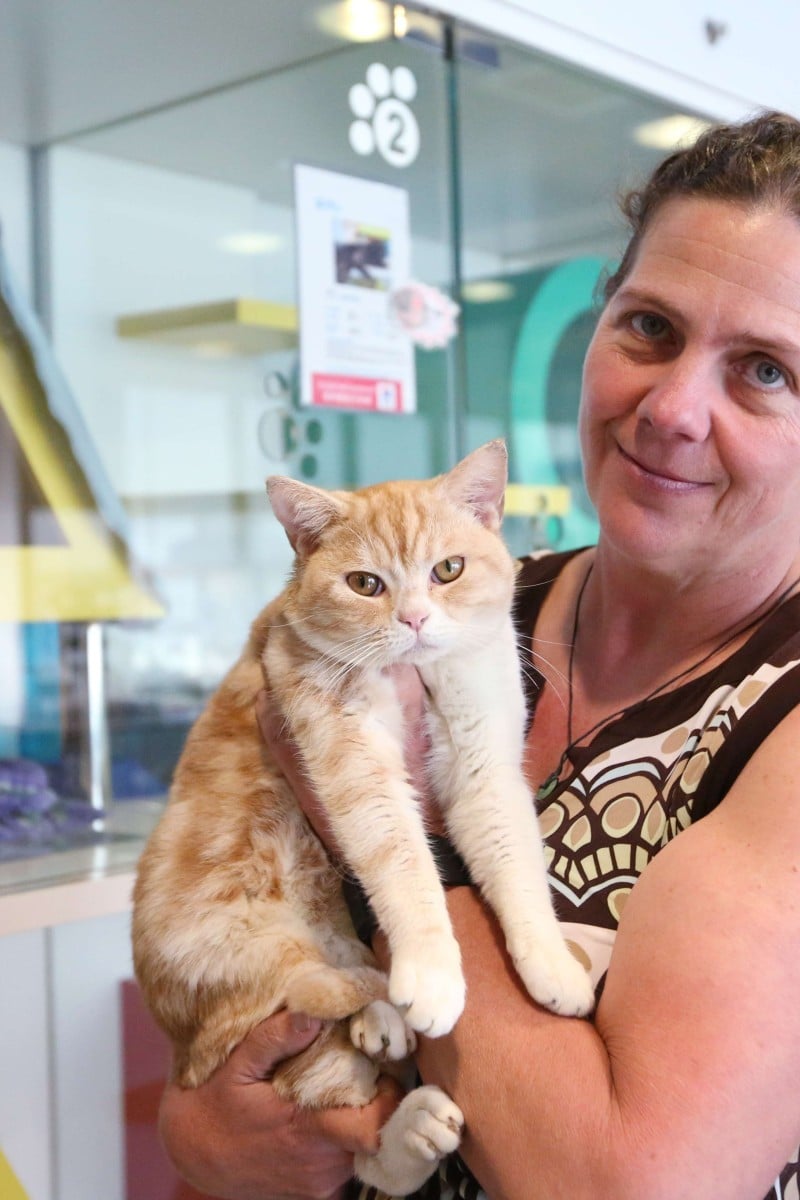
Mercy or murder? The controversy surrounding animal euthanasia
Sometimes it is kinder to put down a suffering animal, but what about when they are a healthy stray?
 Fiona Woodhouse has called for responsible pet ownership.
Fiona Woodhouse has called for responsible pet ownership. Every pet owner dreads the day they have to decide to end their furry friend’s life. If a pet is suffering, a vet will advise that putting them down is the kindest thing to do. Young Post reached out to animal welfare organisations in Hong Kong to learn more about animal euthanasia, including how and why it is used.
The methods used to put animals to sleep are designed to be as quick and painless as possible. In Hong Kong, a vet will inject the animal with a lethal dose of painkillers.
Most animal welfare groups agree that an animal being put down is a medical procedure and should be done for ethical reasons. In its guidelines, Hong Kong’s Society for the Prevention of Cruelty to Animals (SPCA) emphasises that the decision should be taken with animal welfare in mind. Usually, an owner will be told there is nothing else that can be done to help their pet, and that keeping them alive would only prolong their suffering.
Dr Fiona Woodhouse, Deputy Director (Welfare) for the SPCA, says it is not a decision that is taken lightly. “An animal will be assessed by our veterinary team. And on the basis of the vet’s opinion, taking into account all the other factors, a decision will be made,” she explains.
Euthanasia can be seen necessary evil when the pet is in too much pain to live a normal life. But the destruction of animals becomes a much more controversial issue when it is used as a way of controlling population sizes. Even though the Agriculture, Fisheries and Conservation Department (AFCD) describes euthanasia as “a last resort for managing stray animals”, many animals are put down every year. Though there are no figures available for how many healthy animals are put down, animals are sometimes euthanised when shelters are full.
It is a policy that Noel Fan Wan-ching, of the Society for Abandoned Animals (SAA), disagrees with. “We do not kill or abandon animals due to lack of resources, we only do it for medical reasons,” he says.
Mark Mak Chi-ho, from the Non-Profit making Veterinary Services Society (NPV), adds: “I don’t agree with the SPCA or AFCD’s policy of using [euthanasia] for animal management.” he says “Complaints or behavioural issues preventing them from being homed are poor reasons for euthanasia. We don’t euthanise poorly behaved children.”
Generally, strays are dealt with using a “trap, neuter and return” policy, whereby the animals are re-released on to the streest. It may not sounds like a perfect plan, but it is one that works, according to the SPCA, SAA and NPV. The AFCD’s data show the number of stray cats and dogs caught and the number of cats and dog euthanised have gone down. For example, the number of dogs euthanised has dropped from 6,561 in 2011 to 2,421 in 2015. The SPCA figures show similar improvement.
Another issue which causes a problem of strays is irresponsible pet ownership. Abandoning animals due to boredom or not neutering them can make the problem worse. Fan points out the problem with rural pet owners “Those in villages or those who keep dogs for security at cargo or construction sites may not want to take responsibility.”
A lack of neutering may be caused by owners not wanting their pet’s behaviour to change after spaying. It could also be due to the cost of neutering and people not wanting to take responsibility for an animal they don’t see as their pet in a traditional sense, for example, if they only leave food out for them.
The problem of stray animals could be solved with responsible pet ownership, Woodhouse says. “We used to have cat boxes around Hong Kong for people to put unwanted cats in. We stopped it after deciding it was the wrong policy. We must push responsibility to the owners.”
The SAA is currently looking after around 300 dogs and 100 cats and they get new animals dropped off two to three times a month. Fan states: “We’re at full capacity and have been for years. Adoption rates are not high [enough].”
The NPV has a different perspective on stray animals. It sees them as community animals, not strays, and believes they are entitled to space in the city. “There’s a logic problem here. Animal control units act due to complaints from residents. If residents didn’t complain, there wouldn’t be a problem.” Mak says. “Human society has a responsibility to take care of them. We should get rid of the problem, not the animals.”
